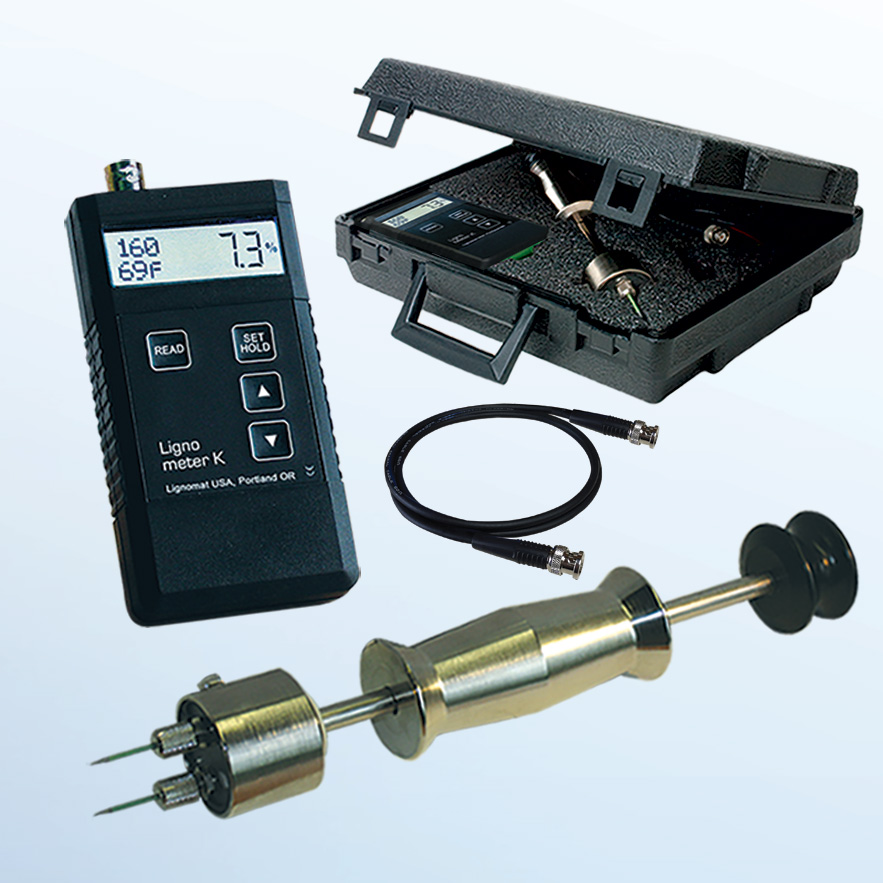Moisture Meter Reviews: Contrasting the very best Versions for Professional and Do It Yourself Use
Moisture Meter Reviews: Contrasting the very best Versions for Professional and Do It Yourself Use
Blog Article
The Ultimate Overview to Dampness Meters: A Comprehensive Summary and How They Can Conserve You Money
In the realm of structure maintenance, building, and various markets, the significance of accurately gauging dampness levels can not be overstated. Wetness meters offer as essential tools in identifying and keeping track of moisture material in materials, assisting in stopping expensive damages and making certain the high quality of items. Comprehending the subtleties of different sorts of wetness meters, their applications, and the potential cost-saving advantages they use can be a game-changer for professionals and businesses alike. Uncovering how these gadgets can not only simplify processes yet additionally contribute to financial cost savings is a journey worth starting.
Kinds of Wetness Meters
One typical type is the pin-type wetness meter, which measures the electric resistance between two pins placed into a material. Pinless moisture meters, on the various other hand, usage electromagnetic sensing unit plates to scan a larger location without causing damages to the product's surface area.

Furthermore, there are also specialty moisture meters developed for particular materials like grain, hay, or soil. These meters give exact moisture readings customized to the distinct homes of the material being evaluated. Infrared dampness meters measure the thermal residential or commercial properties of a material to identify its dampness material non-invasively, making them useful for applications where pin or pinless meters might not be ideal. Recognizing the various kinds of dampness meters offered can aid sectors choose one of the most suitable tool for their details wetness dimension demands.

Advantages of Utilizing Wetness Meters
Dampness meters offer indispensable advantages in properly keeping an eye on and analyzing dampness degrees in varied materials and atmospheres. One of the primary benefits of utilizing wetness meters is the prevention of prospective damage triggered by excess wetness.
Moreover, using dampness meters can lead to raised power effectiveness. In farming settings, dampness meters play a critical role in optimizing plant yields by enabling farmers to check soil moisture degrees and make informed watering choices.
Just How to Choose the Right Wetness Meter
When choosing a moisture meter, it's vital to guarantee that the meter is appropriate for the my site specific product you will certainly be testing. Different materials have varying electrical homes that can impact moisture readings, so picking a meter created for your material is crucial for exact outcomes. By meticulously evaluating these variables, you can select a moisture meter that fulfills your requirements and offers exact wetness measurements for your jobs.
Proper Strategies for Wetness Meter Use

Expense Cost Savings With Wetness Meter Applications
Just how can the calculated usage of moisture meters lead to substantial expense savings throughout different industries? In the farming industry, dampness meters aid in determining the optimum time for gathering crops, stopping over-drying or excess dampness that can impact the last product's quality.
In a similar way, in building and construction, wetness meters help protect against costly problems by detecting wetness levels in structure materials, such as wood or concrete, which can cause structural concerns otherwise addressed without delay. By recognizing trouble areas at an early stage, specialists can take corrective actions to avoid considerable fixings or replacements, inevitably saving money and time.
In addition, in the food handling sector, wetness meters are vital for keeping track of product high quality and ensuring compliance with safety guidelines. By accurately determining dampness content in foodstuff, manufacturers can stop perishing, preserve quality, and reduce waste, causing significant expense savings. Generally, the moved here tactical application of dampness meters is an important financial investment that can result in considerable price reductions and enhanced effectiveness throughout different markets.
Conclusion
In final thought, moisture meters are valuable tools for detecting and measuring wetness levels in numerous products. By utilizing the appropriate dampness meter and adhering to appropriate methods, users can effectively prevent costly problems created by excess wetness.
Dampness meters serve as vital devices in finding and checking moisture material in materials, assisting in protecting against expensive damages and ensuring the top quality of products. Infrared moisture meters determine the thermal residential or commercial properties of a product to determine its wetness content non-invasively, making them beneficial for applications where pin or pinless meters may not be ideal.Moisture meters supply vital advantages in precisely monitoring and analyzing moisture degrees in diverse materials and environments. In agricultural setups, moisture meters play an essential role in enhancing crop returns by enabling farmers to keep an eye on dirt dampness degrees and make educated irrigation choices.In conclusion, dampness meters are important devices you can look here for finding and determining wetness degrees in various materials.
Report this page